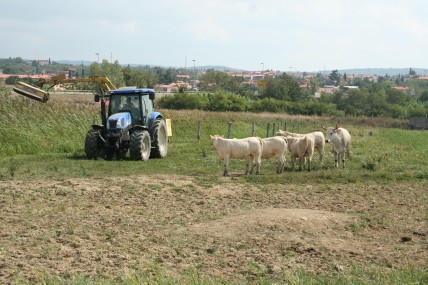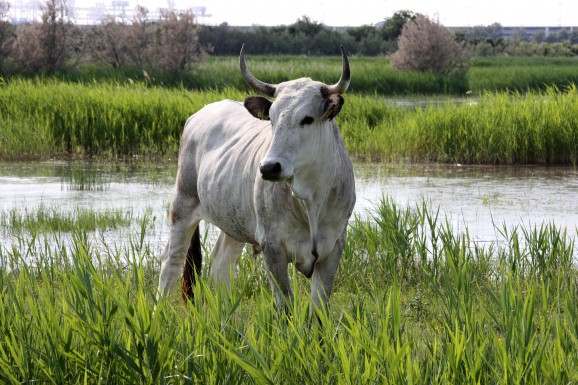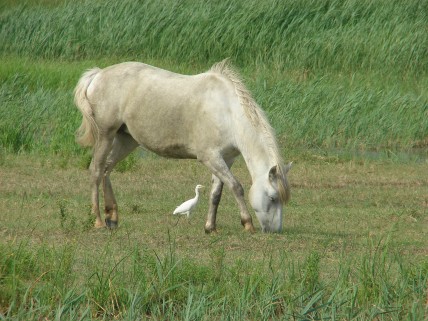How we prevent the overgrowth of wet meadows?
Wet meadows are being managed through temporarily adjustments of water regime, with grass cutting once per year after the end of breeding period (August or September) and permanent controlled grazing.
Old Istrian cattle was brought to this part of the Europe by Huns a long time ago. Our ancestors have been using them primarily as draft animals for transport and management of fields and vineyards. Due to economic development they were replaced by the tractors decades ago and once dominant breed in Istria has become extinct in Slovenia. Centuries before the onset of mechanical machinery’s they represented a main source of survival for the families, have been indispensable in the work in fields, vineyards and the woods.
After the years of efforts, we managed to get the Istrian cattle back to Slovenian Istria in cooperation with the Veterinary clinic Koper, local associations and the Municipality of Koper in 2007. We have introduced them to Škocjanski zatok where they help to maintain vegetation balance, while at the same time they commemorate the ancient times, when they represented the everyday life’s harmony between man and animal, and delight visitors.
Istrian cattle is working, resilient, durable and steady, controllable at work, modest in nutrition, with lively temperament and strongly dependant on humans. They live up to twenty years and more, reach a thousand kilograms of body weight, have strong hooves, their step is long and slow. Sometimes they were placed screwed brass balls on the peaks of the long horns not to harm humans or other animals.
Camargue horses live freely in the wild in the marshes at the mouth of the river Rhone in France. The breed is very old and has adapted through natural selection to live in the swamp. In the early nineties they were brought from France to the Soča River-mouth Nature Reserve in Italy, from where we got them to Škocjanski zatok. Born black or dark gray they become white as they grow.




